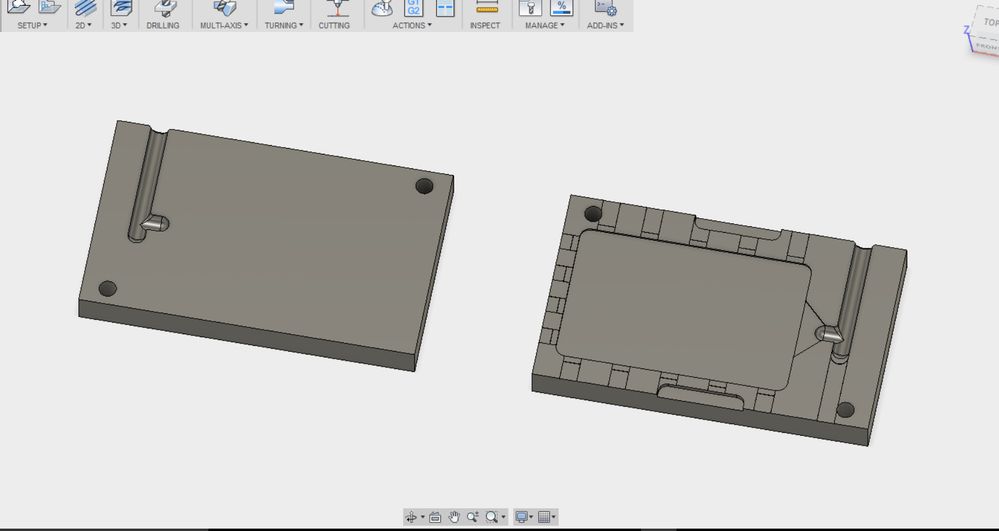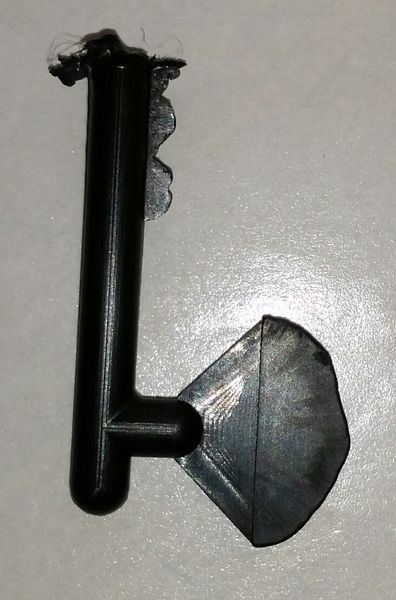Greetings,
First, I'd like to say thank you to the members of this forum. I began machining just under 10 months ago, and the advice people have given me here has really propelled me forward as I try to climb each mountain.
I am trying to successfully inject a mold I made for a card, but I keep getting short shots. Here is a picture of the mold and the short shot:


I am concerned that I'm not designing the mold properly, as I'm completely self-taught. I have successfully made several other molds; however, this was the largest and thinnest I have attempted. I did some research online and found a card mold with a fan gate, so I based it off of that.
I am using an LNS 150A (a benchtop, hand operated injection machine), and the material is ABS with a melt mass-flow rate nominal value of 21g/10 min .
Part Size: 3" x 2" x .03"
Vent Depth: .002"
Fan Gate Depth: 0.0225"
Runner Width: .25"
I realize this part is difficult to inject largely due to it being very wide and thin, along with material's viscosity. I'm thinking perhaps the land on the fan gate is simply too much, and my guess is I should mill the runner longer so it leaves a gate with a land of about .02" . Again, this is just a guess.
I've heated the mold to 130 F with a barrel temperature of 460 F, and still cannot get much better. Any advice would be appreciated!
- Michael
First, I'd like to say thank you to the members of this forum. I began machining just under 10 months ago, and the advice people have given me here has really propelled me forward as I try to climb each mountain.
I am trying to successfully inject a mold I made for a card, but I keep getting short shots. Here is a picture of the mold and the short shot:
I am concerned that I'm not designing the mold properly, as I'm completely self-taught. I have successfully made several other molds; however, this was the largest and thinnest I have attempted. I did some research online and found a card mold with a fan gate, so I based it off of that.
I am using an LNS 150A (a benchtop, hand operated injection machine), and the material is ABS with a melt mass-flow rate nominal value of 21g/10 min .
Part Size: 3" x 2" x .03"
Vent Depth: .002"
Fan Gate Depth: 0.0225"
Runner Width: .25"
I realize this part is difficult to inject largely due to it being very wide and thin, along with material's viscosity. I'm thinking perhaps the land on the fan gate is simply too much, and my guess is I should mill the runner longer so it leaves a gate with a land of about .02" . Again, this is just a guess.
I've heated the mold to 130 F with a barrel temperature of 460 F, and still cannot get much better. Any advice would be appreciated!
- Michael

